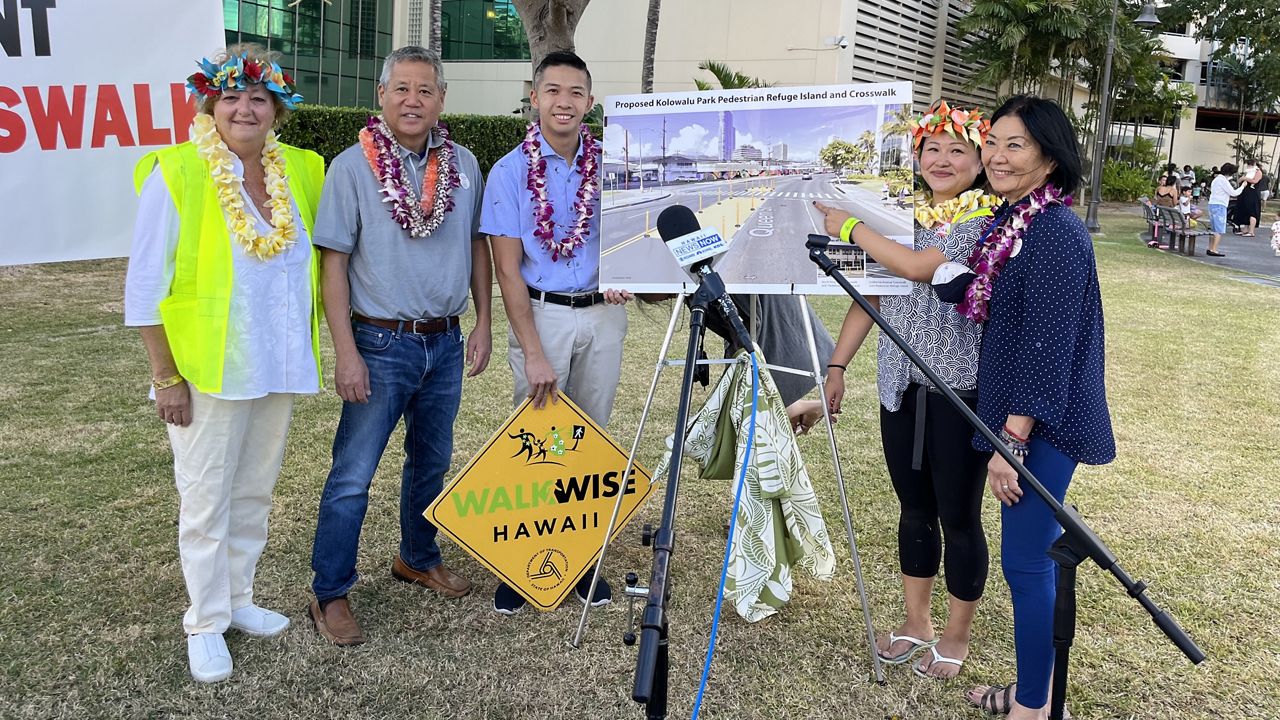A week and a half ago, Kakaako neighbors Jeanne Rice and Karen Cheung joined forces to lobby lawmakers into restoring a crosswalk between Queen Street and Waimanu Street, an intersection identified by police as one of the most dangerous on the island.
They sent letters. They planned a rally. They crossed their fingers.
And in the veritable blink between the first drop in the mailbox and the rally, which drew dozens of area residents on Saturday, a rare bird in the forest of Hawaii politics alighted on the park — an overnight solution.
One of the letters was sent to state House speaker Scott Saiki, who responded supportively within a day and coordinated an effort with Sen. Sharon Moriwaki, Rep. Adrian Tam, the Hawaii Community Development Authority, the Department of Transportation Services and the Department of Planning and Development to see what could be done.
At Saturday’s rally, Saiki announced a two-phase plan to make the intersection safer.
The first phase, expected to be completed within the next six months, will restore the crosswalk and add a pedestrian refuge center in the middle of the five lanes of traffic. Department of Transportation Services will pay for this initial phase.
The second phase will involve installation of a flashing beacon system. Saiki said an appropriation of up to $1 million has been added to the annual budget, which still requires Senate approval, for this project. A timeline for completion has not yet been determined.
“(This intersection) has become more dangerous since the crosswalk was removed years ago,” Saiki said. “The number of collisions has increased and we know that there have been more near misses. It’s really, really troubling for us because we know that a lot of children and their parents use this crosswalk to access this park.
“Just within a matter of hours this past week we saw total cooperation between the state and the city,” Saiki said. “We know that doesn’t always happen that you see that kind of community cooperation, but it’s because the people who run these departments, all of us, understand the need to improve this area to make it safe.”
The rally was held at Kolowalu Park, a recreational oasis in the shadows of a dozen neighboring high-rises, to which families often sprint in stop-start fashion across the intersection to reach. Cheung herself was nearly struck twice within the last two weeks while trying to make her way across.
Rice said individual residents had been complaining about the situation for months, but the most recent push by herself and Cheung sped up the process of getting the matter addressed.
Craig Nakamoto, HCDA compliance assurance and community outreach officer, said the coordinated effort between city and stage agencies is a positive example of what can be done to provide solutions to community problems.
“We hope to be doing a lot that in the most ‘un-siloed’ manner to make sure we can deliver these solutions to neighborhoods and provide safer infrastructure for everyone,” Nakamoto said.



